Get PeakVisor App
Sign In
Search by GPS coordinates
- Latitude
- ° ' ''
- Longitude
- ° ' ''
- Units of Length

Yes
Cancel
Share ×

Scan the QR code and open PeakVisor on your phone
❤ Wishlist ×
Choose
Delete
Neuquén is a province in western Argentina. The region features dense forests, stunning lakes, and a mountainous landscape. There are over 1144 named peaks, of which Volcán Domuyo (4,709 m / 15,449 ft) is the tallest, and Volcán Lanin (3,747 m / 12,293 ft) is the most prominent.
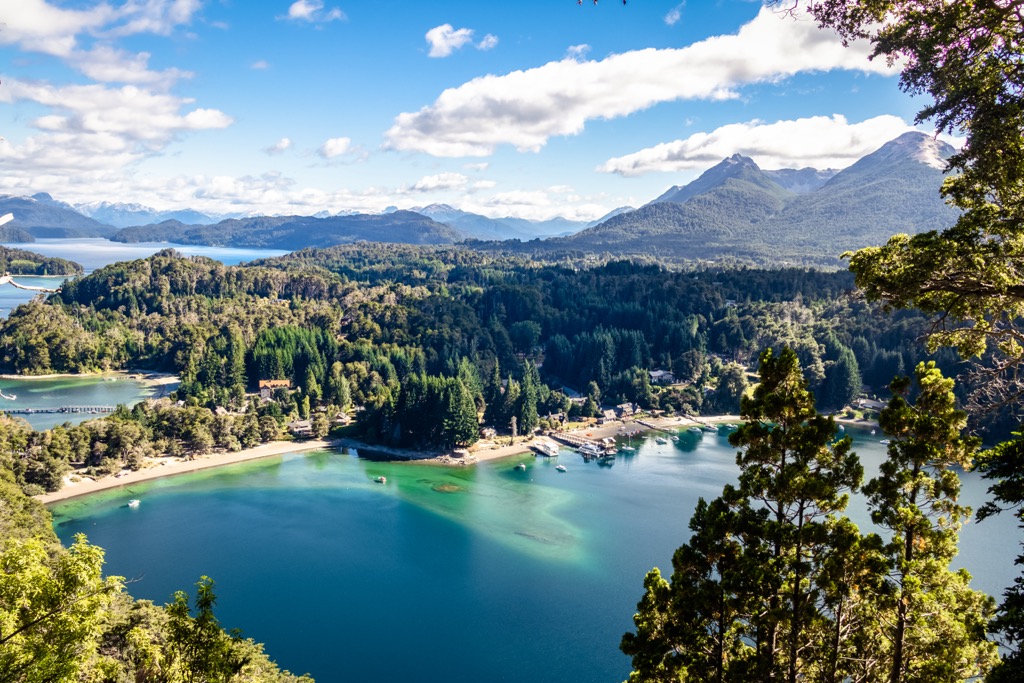
The Province of Neuquén is one of the 23 provinces of Argentina. Neuquén is situated along the western border of the country, sharing an international border with Chile and provincial borders with Río Negro and Mendoza.

It is in the northwest of the Patagonia Region, with the Andes Mountains' continental divide forming the border with Chile. The Colorado River forms the northern border with Mendoza, and the Limay River forms the southeast border with Río Negro.
Two distinct landscapes differentiate the province; the mountainous relief of the Andes characterizes the western portion, and valleys and plateaus characterize the east. Furthermore, the vegetation of the west is characteristically Patagonian Andean forest, while the east is arid and covered with shrubby steppe vegetation.
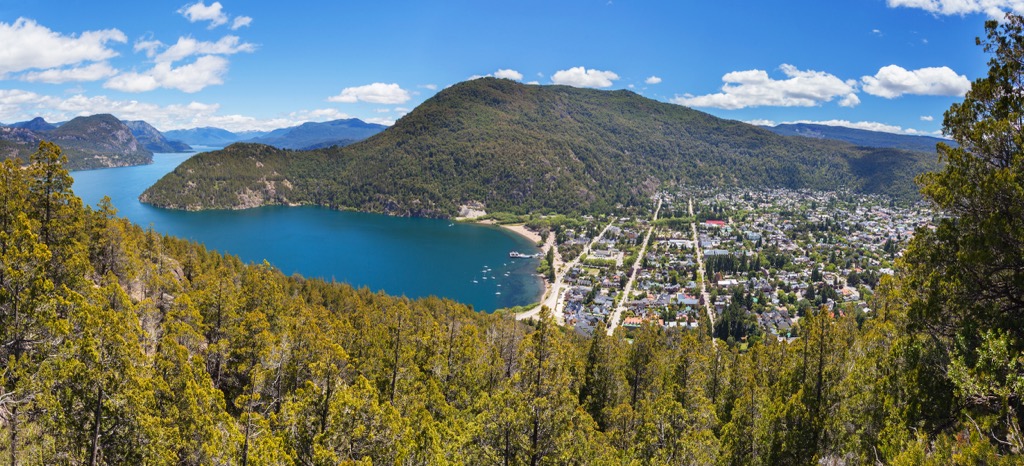
There are over 1,100 named peaks in Neuquén, the tallest of which are near the border with Chile. Volcán Domuyo (4,709 m / 15,449 ft), near the northern border with Mendoza, is the tallest peak, and Volcán Lanín (3,747 m / 12,293 ft), along the Chile-Argentina border, is the most prominent.
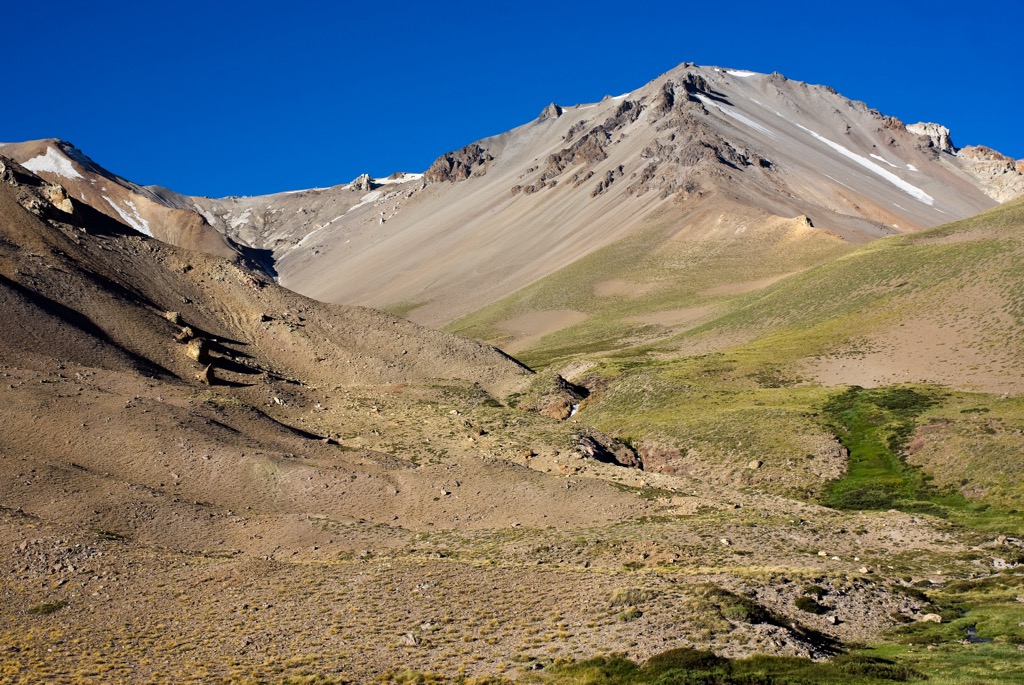
Neuquén has some of Argentina's most beautiful and dramatic landscapes, with beautiful blue lakes, snow-capped rugged mountains, and dense forests. The following are the major parks and nature reserves that help protect and conserve the province’s incredible wilderness areas:
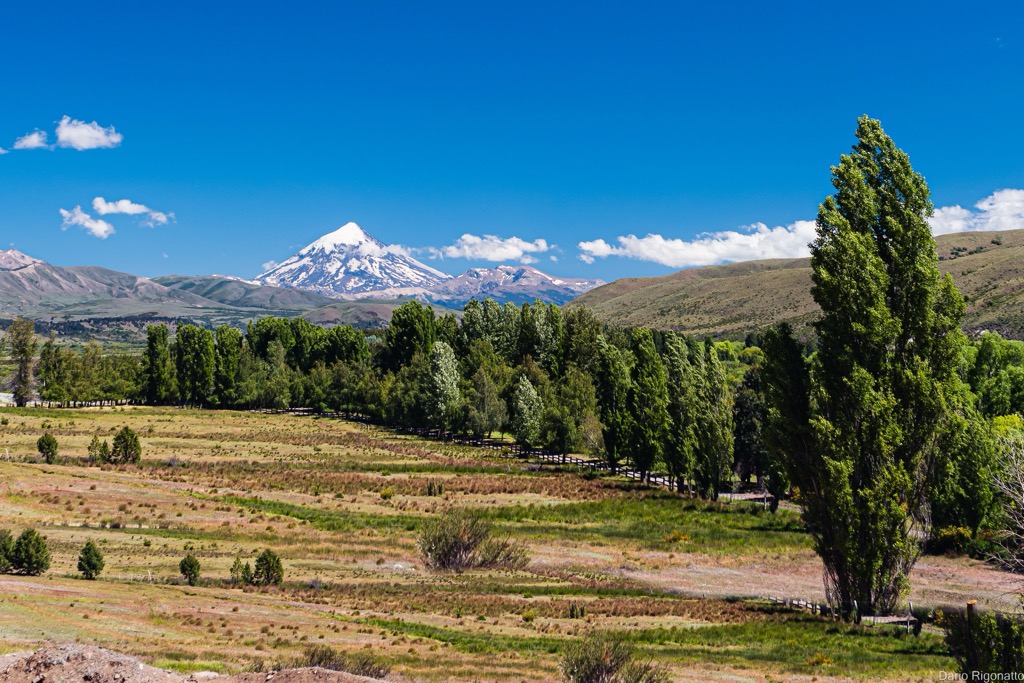
There are two prominent geological features of Neuquén: the Andes Mountains and the Neuquén Basin. The Andes dominate the western skyline and form the border with neighboring Chile, while the Neuquén Basin is the vast steppe covering the eastern part of the province.
The Neuquén Basin formed over 200 million years ago during the Late Triassic. For around 150 million years, until the Early Cenozoic, the Pacific Ocean intermittently filled the basin with sedimentary deposits. The marine transgressions from the Pacific created a nearly continuous Late Triassic to Early Cenozoic succession of sedimentary deposition. As such, the area’s fossil record is of great scientific value.

As the Andes Mountains began to form in the region during the early Cenozoic, the basin was cut off from the Pacific Ocean, and subsequent deposition came from the early Atlantic Ocean. The rising Andes created a new continental divide, now the border between Chile and Argentina.
The fold and thrust belts of the Andean orogeny created the Andean foothills across the western part of Neuquén. During the formation of the Andes, there were tremendous volcanic eruptions that produced some of the tallest peaks in the region, such as Volcán Domuyo (4,709 m / 15,449 ft), Volcán El Tromen (3,984 m / 13,071 ft), and Volcán Lanín (3,747 m / 12,293 ft).
Additionally, the sedimentary formations of Neuquén contain large reservoirs of oil and gas, which first went into production in 1918. The region is responsible for nearly half of Argentina’s oil production and over half of its gas production.

Diverse plants and animals inhabit Neuquén. The province has two distinct ecosystems: the relatively lush forests along the Andean foothills and the dry steppe of eastern Neuquén and the Andean highlands.
Along the Andean foothills are some of Argentina’s most dramatic landscapes, which include lush forests and beautiful lakes. The forests of the foothills are filled with lengas, coihue, ñires, Chilean cedar, and Patagonian cypress.
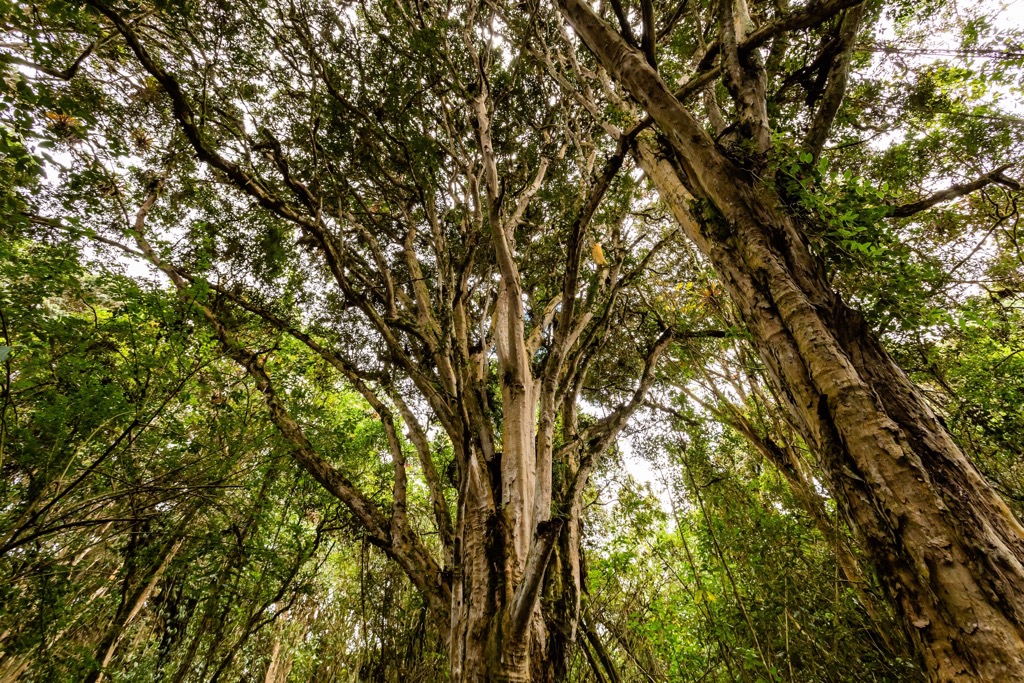
Near the city of Villa La Angostura is Los Arrayanes National Park, which protects an area dense with arrayan trees between 350 and 600 years old. 450-year-old coihue trees along the Chilean border and 1,500-year-old fitzroya trees are scattered among the lake region of the foothills.
The endangered southern Andean huemul live in western Neuquén as well as pudus, foxes, cougars, guanacos, and maras. Birdlife includes Andean condors, blue-eyed cormorants, Magellanic woodpeckers, green-backed firecrowns, and several duck, geese, and swan species.
The Andean highlands and the eastern steppe of Neuquén are significantly drier than the temperate rainforest along the Andean foothills. While there are some exceptional areas, such as Laguna Blanca National Park, where there is a relative abundance of flora and fauna, most of the region is sparsely inhabited.
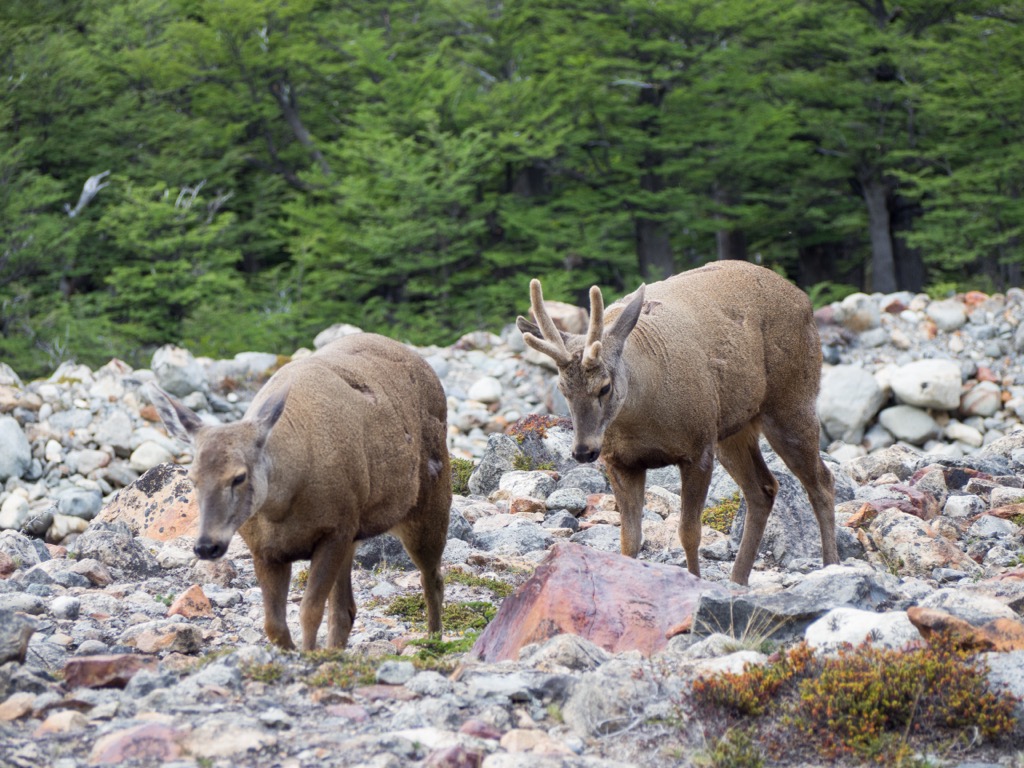
The lack of flora and fauna along the eastern steppe was exacerbated during the region's colonization when farmers brought cattle, sheep, and other agricultural animals to range, decimating local ecosystems.
Most of the steppe is covered with low shrubs that shelter delicate ecosystems where grass and herbaceous plants can grow. Some of the largest plants are wild walnut trees, ñires, and maitenes.
The wildlife across the steppe includes pumas, foxes, skunks, piches, tucos tucos, and chinchillones. There are also many predatory and scavenging birds, such as the Andean condor, black eagle, peregrine falcon, and the common harrier. Songbirds include the white-browed sleeper, burrowing swallow, and the pale basket-eater.
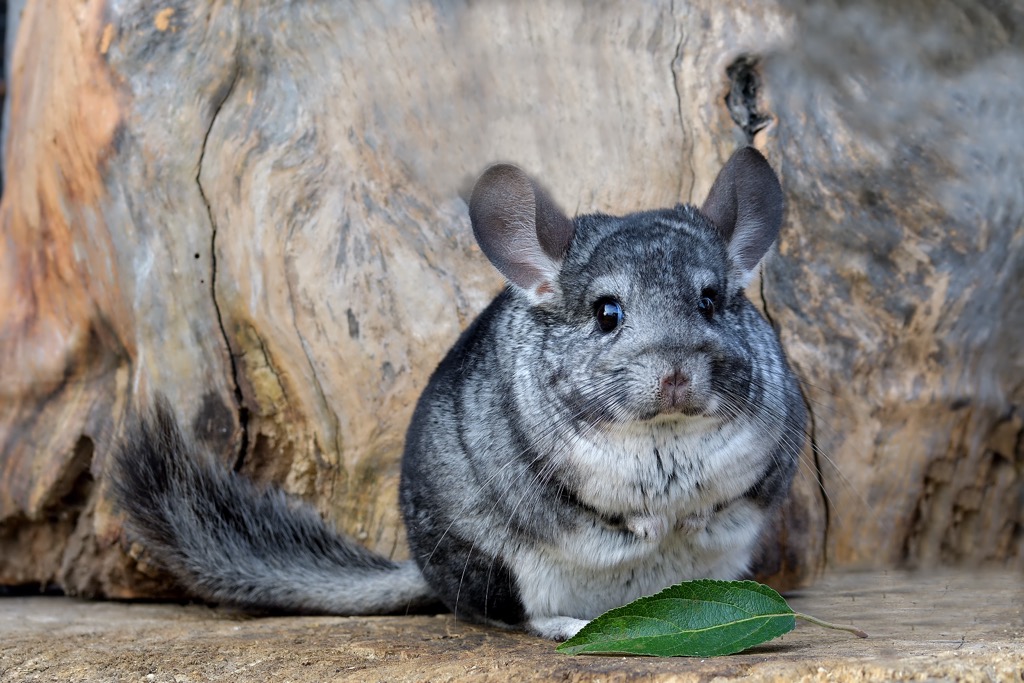
People have inhabited Neuquén for over 15,000 years. Evidence of the first inhabitants has been found in caves and rock shelters. Triangular and lithic points and other tools discovered near Las Lanjas in the Chenque Haichol Cave dated to 7,000 BCE.
The early populations were generally nomadic hunters and gatherers, with local evidence of ancient guanaco hunting and araucaria pine nut harvesting. The first inhabitants of Neuquén were highly mobile groups who followed seasonal migration patterns of the animals they hunted.
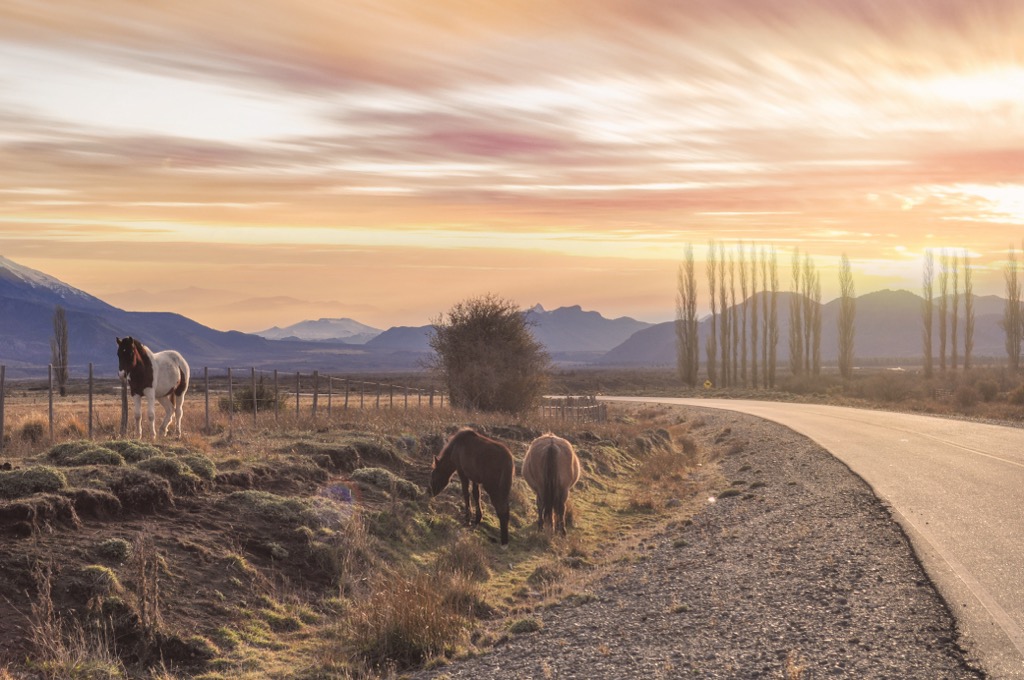
Many of the inhabitants of Neuquén came through the passes in the Andes from present-day Chile. Pottery remains in the province correspond to the Pitrén Culture, the members of which are the ancestors of the current Mapuche.
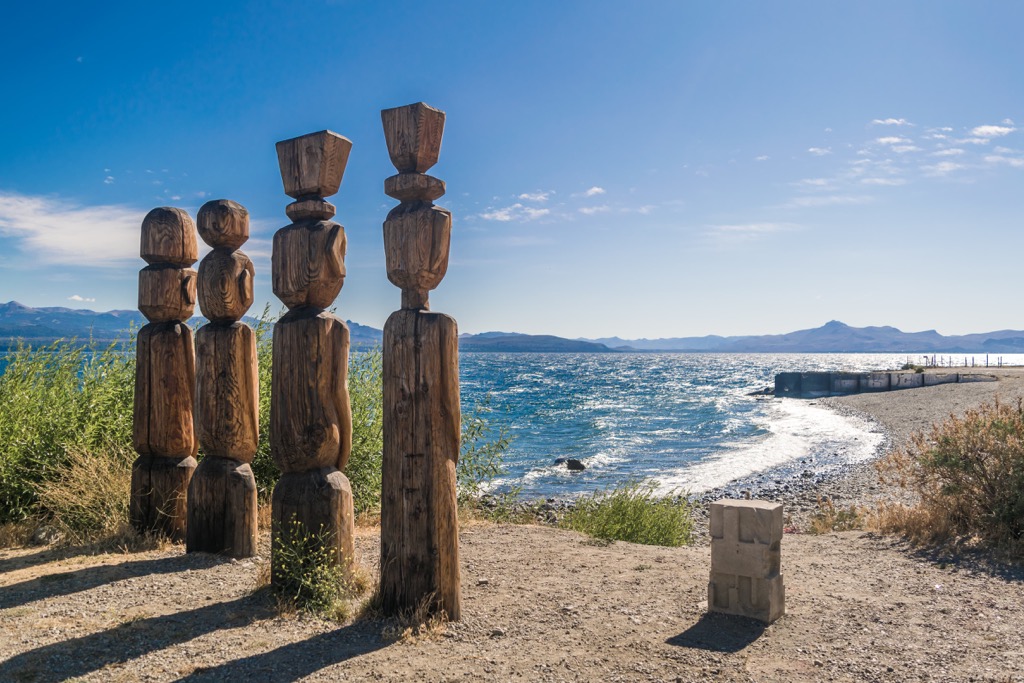
There is evidence that the indigenous practiced agriculture in Neuquén; however, the extensive grasslands and abundant guanaco likely contributed to the local populations favoring a hunter-gatherer lifestyle.
At the time of Spanish colonization, the Tehuelches and Pehuenche occupied the province. The Tehuelche are the indigenous people of eastern Patagonia who carried out vast seasonal migrations across their territory. Throughout the eighteenth and nineteenth centuries, the Tehuelche were heavily influenced by the Mapuche, whose intrusion across the Andes profoundly transformed their culture.
The indigenous populations of southern Argentina underwent Araucanization as the Mapuches, or Araucans, intermixed and absorbed the original inhabitants. The Pehuenche are one of the Mapuche factions that formed in Neuquén.
The first Spanish incursion into Neuquén occurred in the sixteenth century when Jerónimo de Alderete arrived in 1551. Missionaries and explorers scoured the region during the following centuries. Missionaries reintroduced agriculture to much of the Neuquén. Indeed, some fruits were so successful that by the end of the eighteenth century, the Limay River basin was known as the Country of Apples.
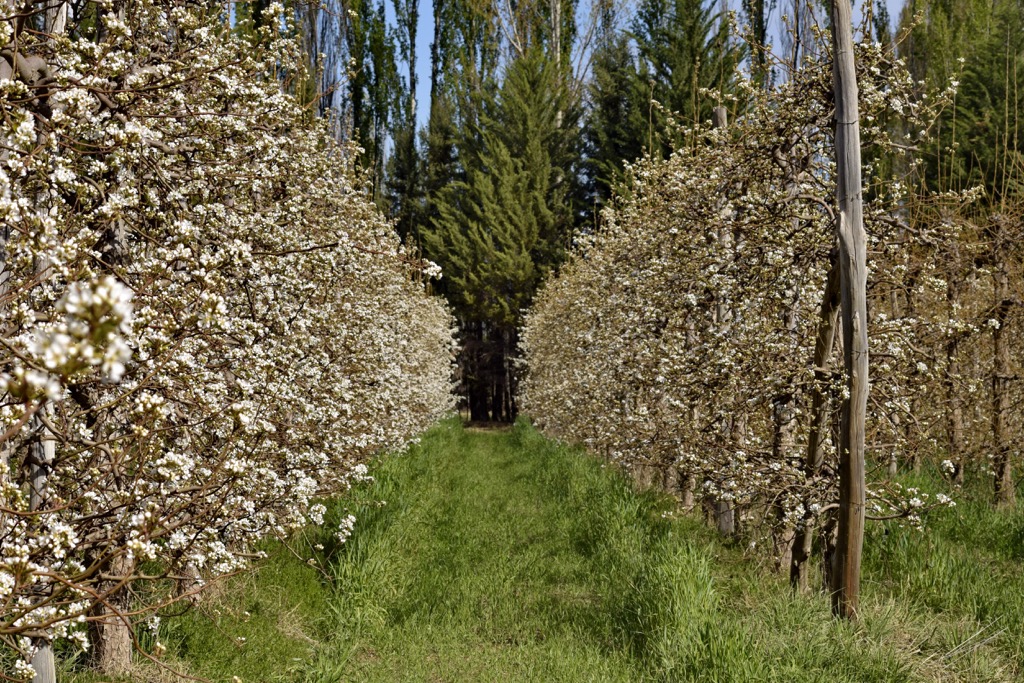
During the nineteenth century, military campaigns effectively wrested control of the territory from the indigenous populations. The region soon became part of the expanding Republic of Argentina as The National Territory of Neuquén in 1884, which preceded the establishment of the province of Neuquén in 1955.
The province is replete with beauty, from the towering Andes in the west to the rugged steppe in the east of Neuquén. The following are the province’s major hiking and tourism areas.
The province's north is known for its relatively untouched landscape of volcanoes and valleys. The virgin landscape and Volcán Domuyo are a significant draw for tourists looking to enjoy hiking and mountaineering.
This area of Neuquén has several protected natural areas, including EL Tromen Provincial Park, Lagunas del Epulauquen Provincial Reserve, and the Domuyo Natural Reserve.
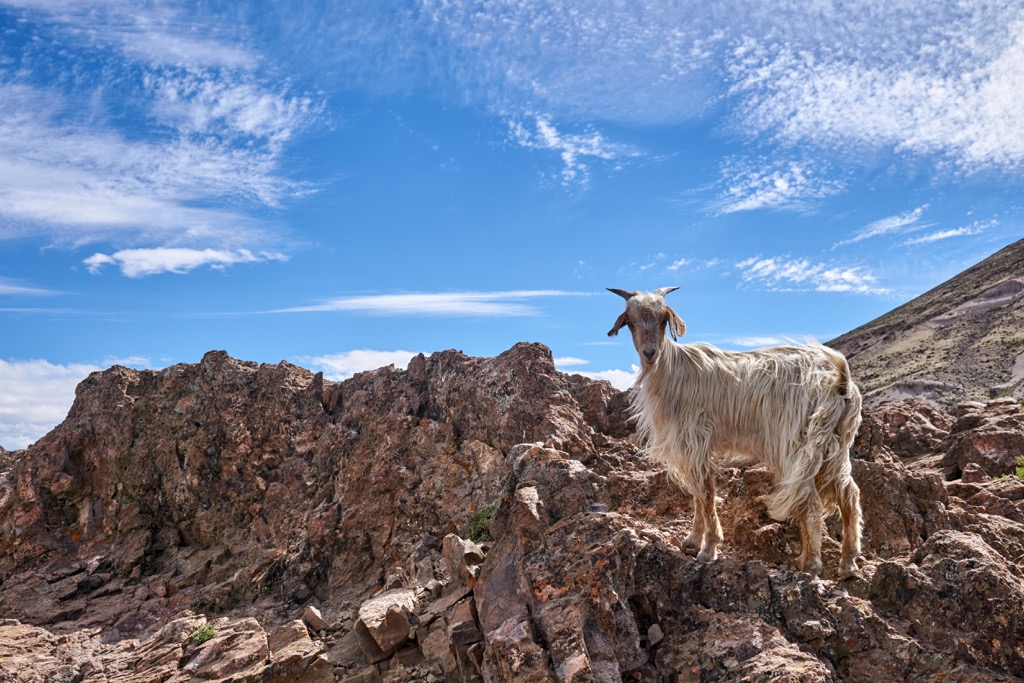
The Lake District of Neuquén is along the southwest border of the province. This area is known to have many opportunities for adventure, such as rafting, mountaineering, kayaking, mountain biking, gliding, horseback riding, and much more.
The region has many ranches and agrotourism establishments to visit, as well as Mapuche communities and circuits related to religious tourism. There are also many opportunities to experience the local culture through its unique cuisine, where meals may feature deer and wild boar, as well as other local ingredients such as rosehips.
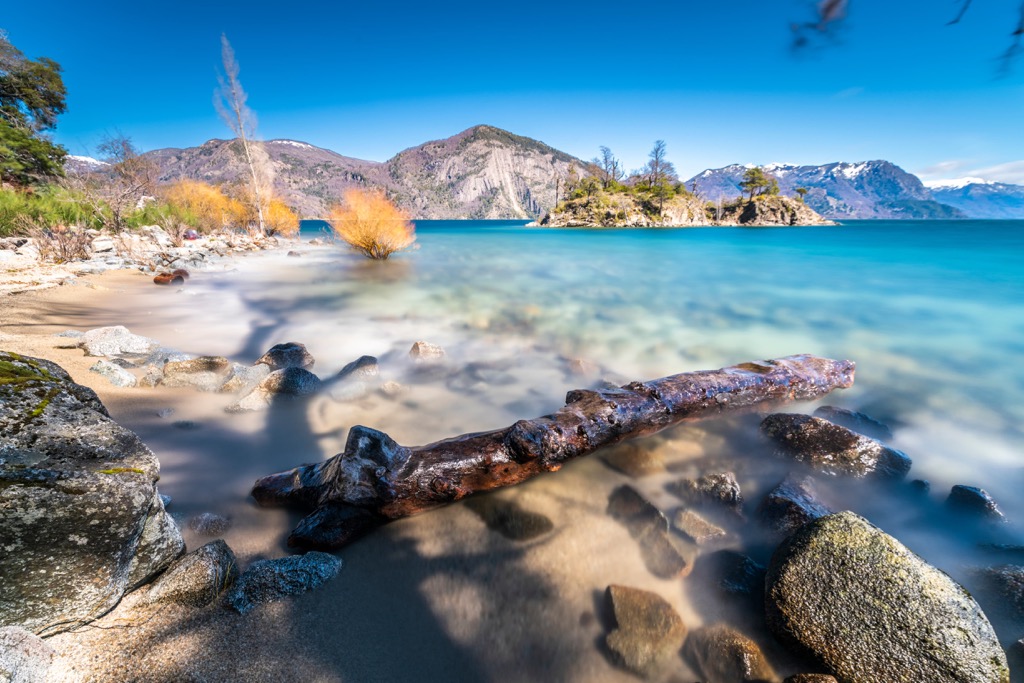
Nahuel Huapi National Park and Reserve is the most popular park in this region; however, there are other gems to explore. The region is home to Lanín National Park, featuring Volcán Lanín, and Los Arrayanes National Park near the city of Villa la Angostura. There are dozens of scenic hiking trails through the mountains, forests, and along the lakes.
Many tourists simply come to the area to drive the Ruta de los Siete Lagos, the scenic roadway featuring views of the region’s seven significant lakes. While driving or hiking through the lake district, visitors can also look for the more than one hundred bird species that migrate through the region, as well as the magnificent Andean condor soaring in the mountain heights.

Copahue Provincial Park is in the northwest of the province and has some unique characteristics that place it on this list of Neuquén’s best attractions. The area has a stunning contrast between the araucaria forests of Caviahue and the lunar-like landscape of Copahue, as well as the region’s famous hot springs.
The thermal spas and relaxation tourism are the major draws to this region. Before Argentina was colonized, the indigenous visited these spas believing the hot sulfurous waters had spiritual and healing powers.
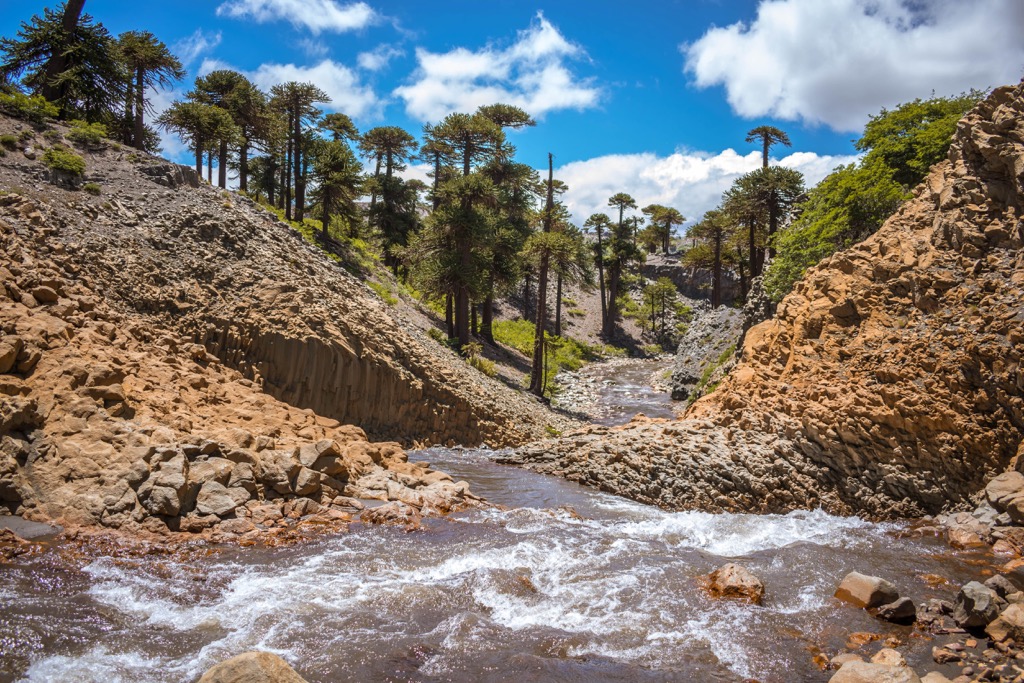
Furthermore, while the hot springs are the major attraction to the area, there are also many hiking trails, some of which cross the Andes into Chile. Popular hikes near the community are the trails to Punta de Piedra overlooking Cavihue Lake and the route to Laguna Escondida, just west of the community.
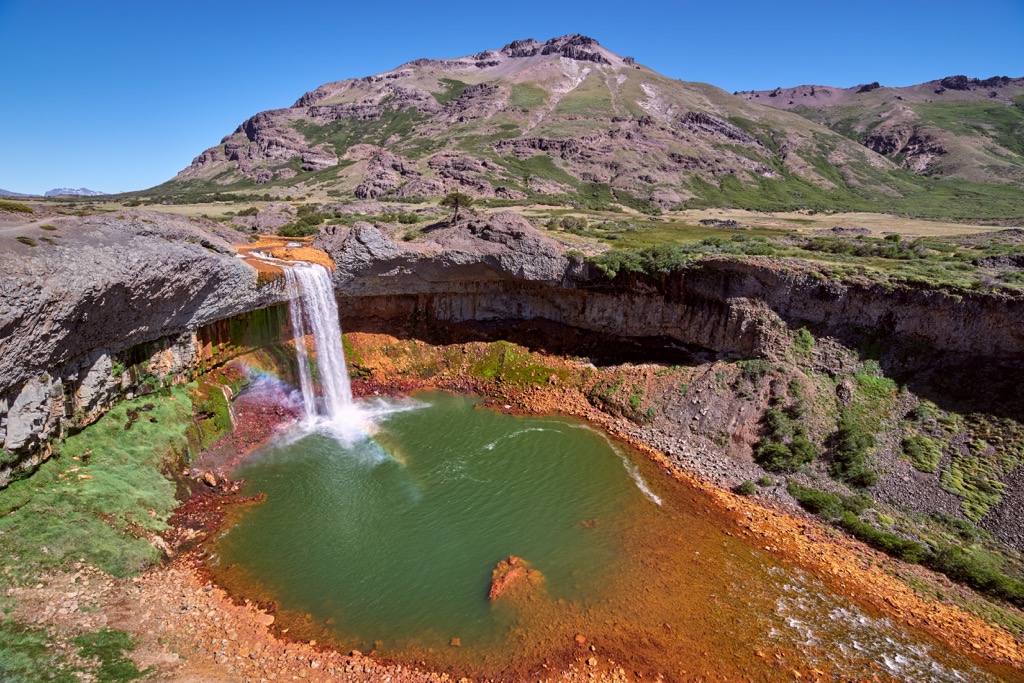
The Neuquén Basin dominates the geology of eastern Neuquén and comprises a set of geological layers dating back between 70 and 200 million years. This part of the province is known for its dramatic desert landscapes, featuring vast red, green, and yellow sandstone formations.
Paleontologists have discovered an abundance of fossilized fauna in the region, including fish, snakes, frogs, turtles, small mammals, and several species of dinosaur. One of the most impressive discoveries in the area is the fossilized remains of Giganotosaurus carolinii, a carnivorous theropod believed to be larger and faster than Tyrannosaurus Rex.

In addition to the stunning desert landscapes of this area, there are also the fertile river valleys, which were settled hundreds of years ago. The Limay River Valley is now regarded as the Country of Apples.
Laguna Blanca National Park is within the vast sandstone desert of the dinosaur steppe. Surrounded by hills and gorges, this lake was protected to preserve the population of black-necked swans. The park has several hikes, including paths to the lagoon and the summit of the nearby Cerro Mellizo Sur.
The city of Neuquén is often referred to as Neuquén Capital and is the province's economic, administrative, and political center. Neuquén is situated along the western shores of the confluence of the Limay and Neuquén rivers, bordering the provinces of Rio Negro and La Pampa.
The nearby river valleys are popular destinations for locals and visitors to enjoy a respite from the summer heat while swimming in the rivers, fishing, or simply hiking along the forested shoreline. The city also has a vibrant cultural scene with shopping malls, theaters, museums, art galleries, and monuments.
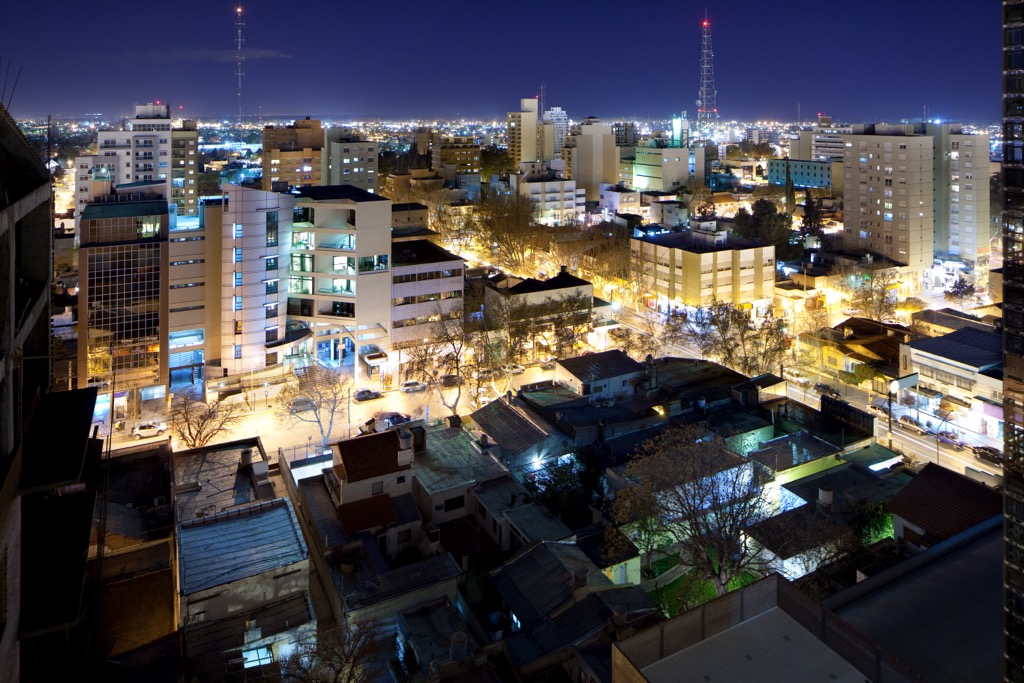
Visitors to Neuquén can visit the observatory, nearby agricultural tourism sites, game reserves, and vineyards. Furthermore, the city is in the “Steppe of Dinosaurs” and has a paleontological center near Barreales Lake. Centro Paleontológico Lago Barreales is not open to casual visitors; however, visitors can arrange tours by contacting the center in advance.
Lácar Lake sits in the Chapelco Valley at the foot of the Andes Mountains and was a point of contention during the border disputes between Argentina and Chile. In 1898, a military outpost was established alongside the lake, growing to become the city of San Martin de los Andes.
At the turn of the twentieth century, the community's economy was centered on logging and farming. However, once Lanin National Park was established in 1937, tourism became the city’s economic driver.
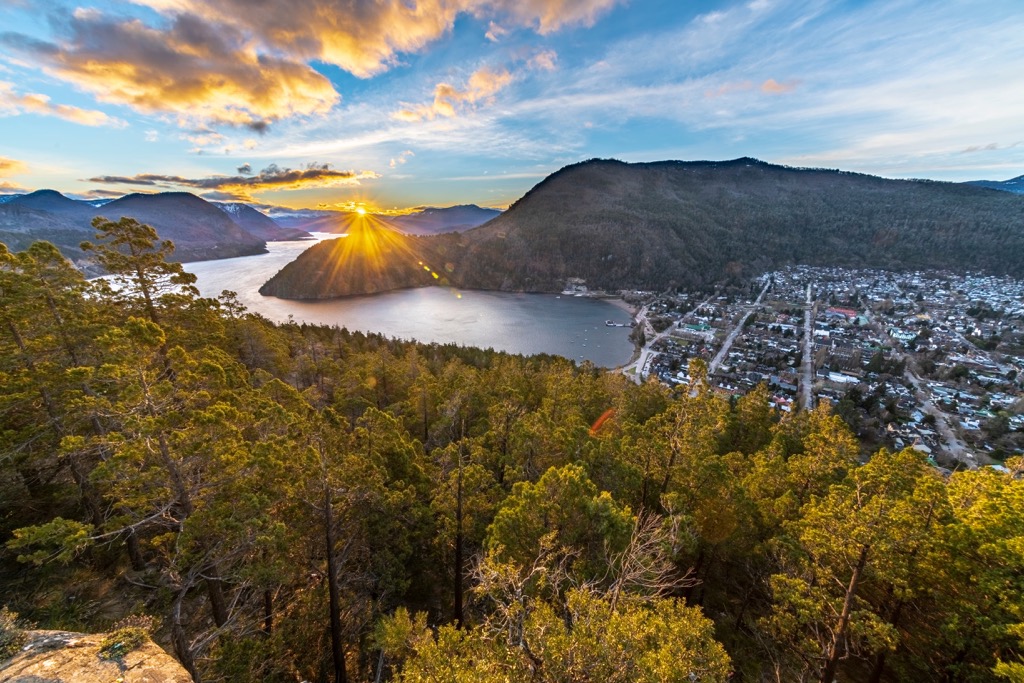
San Martin de los Andes soon became the base camp for hikers aspiring to climb the nearby Lanin Volcano. Furthermore, visitors soon recognized the extreme beauty of the lakes, part of the Ruta de los siete Lagos.
The trek along the Lanin Volcano is a major draw for tourists. However, there are more accessible hikes along the lakes, through the araucaria forests, and to stunning waterfalls, such as the Cascada Chachin. Visitors will also find opportunities to enjoy swimming and boating on the lakes during summer or skiing at nearby Cerro Chapelco Ski Resort during the winter.
Villa La Angostura is one of the resort towns upon the shores of Nahuel Huapi Lake but is a little more relaxed than other nearby resort communities. The city is known for its alpine-style architecture, which, along with the surrounding lakes, forests, and mountain peaks, makes it seem plucked out of the Alps.
The city is surrounded by the beautiful landscapes and scenery of Nahuel Huapí National Park, where visitors can tour along the beautiful Ruta de los siete Lagos, go skiing at Cerro Bayo, or sail upon Nahuel Huapi Lake. Visitors can also hike the beautiful forests of Los Arrayanes National Park through the arrayán trees, some over 600 years old.
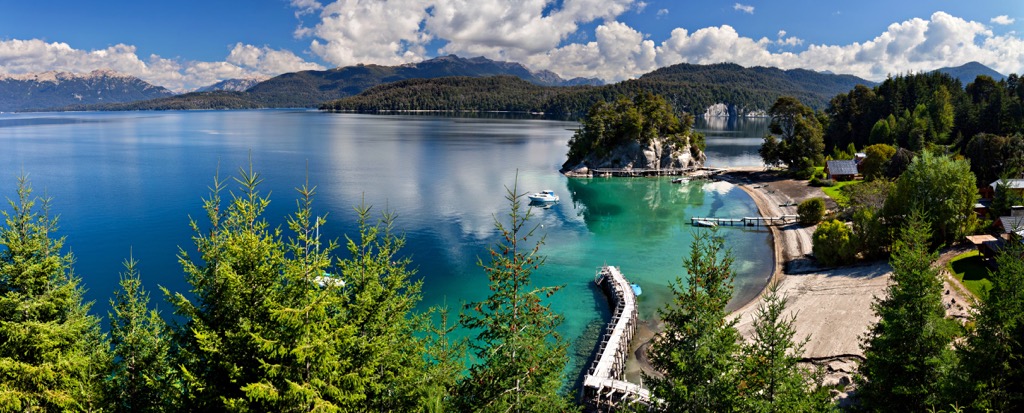
Other local attractions include the spas and the artisan market; however, there is much to explore outside the city. Some popular hikes include the short trails to Cascada del Río Bonito, Mirador Belvedere, Cascada Inacayal, or Laguna Verde.
Located in the middle of the province, between the foothills of the Andes and the Great Plateau, Zapala is at the center of tourism in Neuquén. Tourists pass through the city on the way to destinations such as Junín de los Andes, Bariloche, San Martin de los Andes, Caviahue, Chos Malal, and Villa Pehuenia.
Zapala’s history goes back to its founding in 1913, when a railway was constructed through the region. While there were plans to continue the railway through the Andes to connect with Chile, the railway remains incomplete, and Zapala has become a dry port where train cargo is loaded onto trucks for shipments through the Andes.
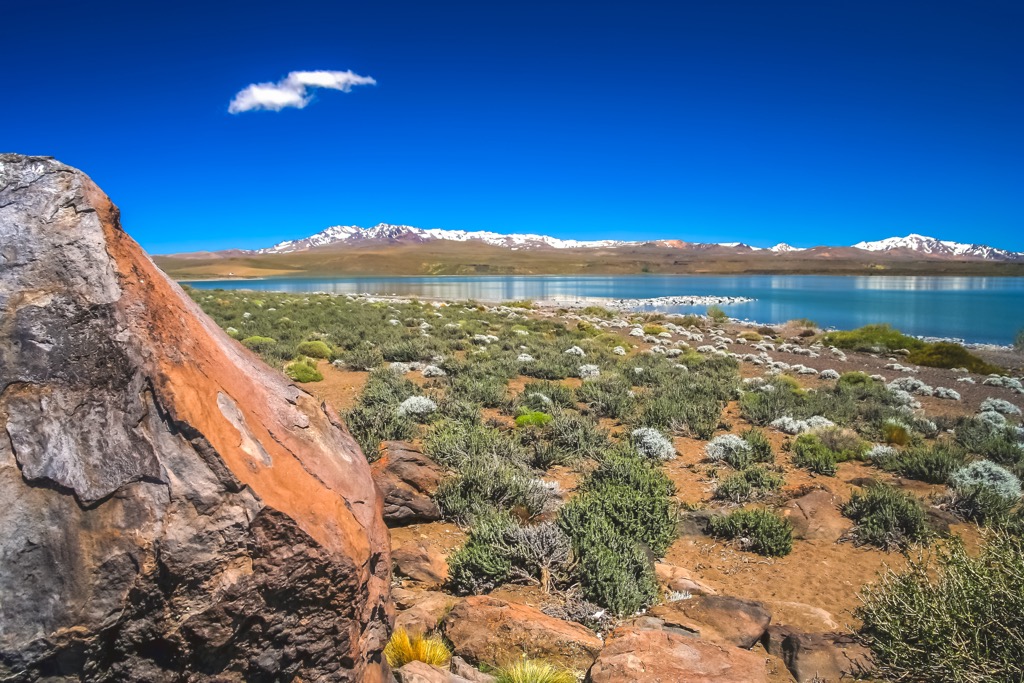
Mining and transportation are the city's major industries; however, being at a crossroads has allowed it to benefit from passing tourists. The city is near Laguna Blanca National Park and the Pehuenia ski resort. The Provincial Museum of the Natural Sciences is in Zapala, home to a vast collection of minerals, fossils, and other geologically significant pieces.
Local attractions also pay homage to the first flight across the Andes, which was started from Zapala on April 13, 1918, by pilot Luis Cenobio Candelaria. Candelaria flew his Morane-Saulnier type L “Parasol” to an altitude of 4,000 m, and after 2.5 hours, he landed on an improvised runway near Cunco, Chile.
Explore Neuquén with the PeakVisor 3D Map and identify its summits.








ultra
volcano
chile-ultras
argentina-ultras
ultra
volcano
chile-ultras
argentina-ultras
